Have you ever stared at gems that have the warm glow of the sun? At first glance, yellow topaz and citrine might look similar with their cheerful yellow hues, but there’s much more to these stones than meets the eye.
In this article, we’ll dive deep into the world of differences between yellow topaz and citrine to understand how unique they are from one another. In the same breath, we’ll also investigate closely to see how similar these two can get.
By the end of this, you’ll not only understand why one might be chosen over the other for a particular piece of jewelry— you’ll also have a renowned appreciation for these two natural treasures.
Whether you’re a budding geologist, a jewelry lover, or just someone curious about the wonders of the natural world, there’s something truly magical about discovering the secrets between yellow topaz vs citrine.
Yellow Topaz vs Citrine – The Major Differences
Despite radiating the same charm, thanks to their yellow color, you’ll be surprised to know that yellow topaz and citrine have more differences than similarities. Below are the major properties and characteristics where they differ:
Color – Citrine can go from pale yellow to deep rich amber
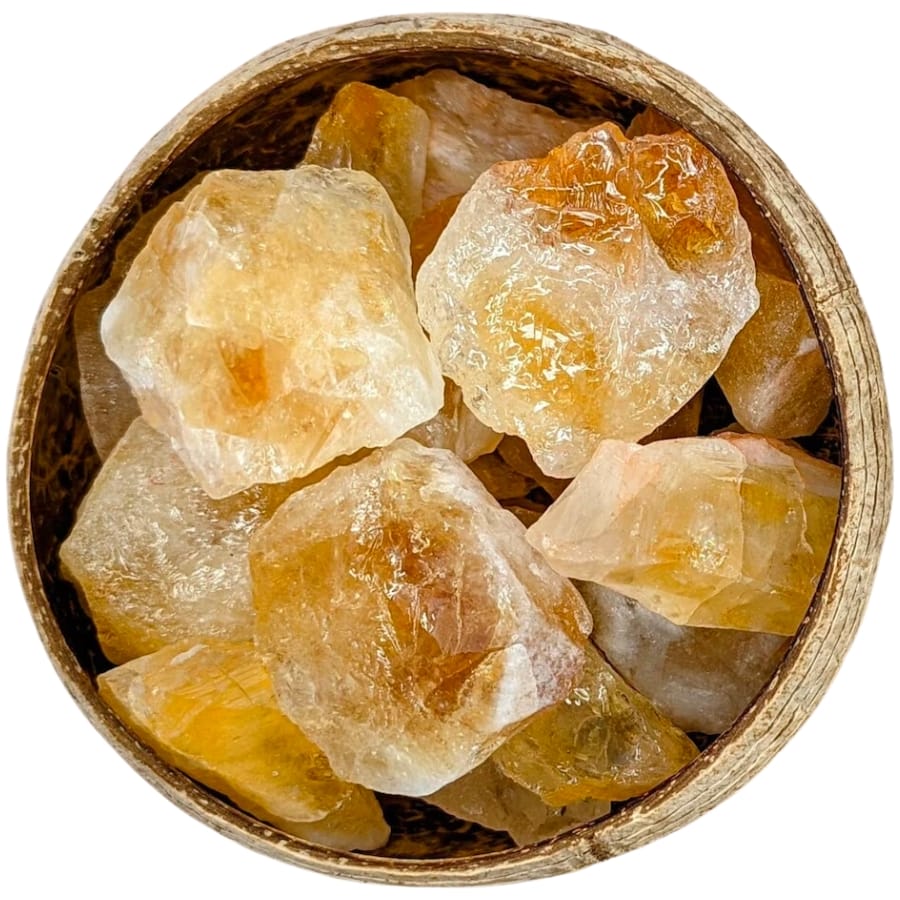
Like siblings who share some traits but also have their own unique features, citrine vs yellow topaz have distinct shades of yellow that set them apart.
Yellow topaz shows off a rich and pure yellow color. It’s like looking at golden sunlight or honey.
It can also have a touch of brownish or reddish tint, making it look warm and inviting. The most sought-after yellow topaz has a vibrant, golden hue that’s both bright and clear.
Citrine, on the other hand, has a different yellow story to tell. Its colors range from a pale, lemony yellow to a deep, rich amber. Imagine the colors of autumn leaves or a sunset; that’s the kind of warm, orangey tones citrine can have.
Sometimes, this gem might remind you of a light, refreshing glass of lemonade, while others could look like a sweet, caramel candy. This wide range of yellow to orange hues in citrine is because of its composition.
Luster – Yellow topaz exhibits a vitreous luster
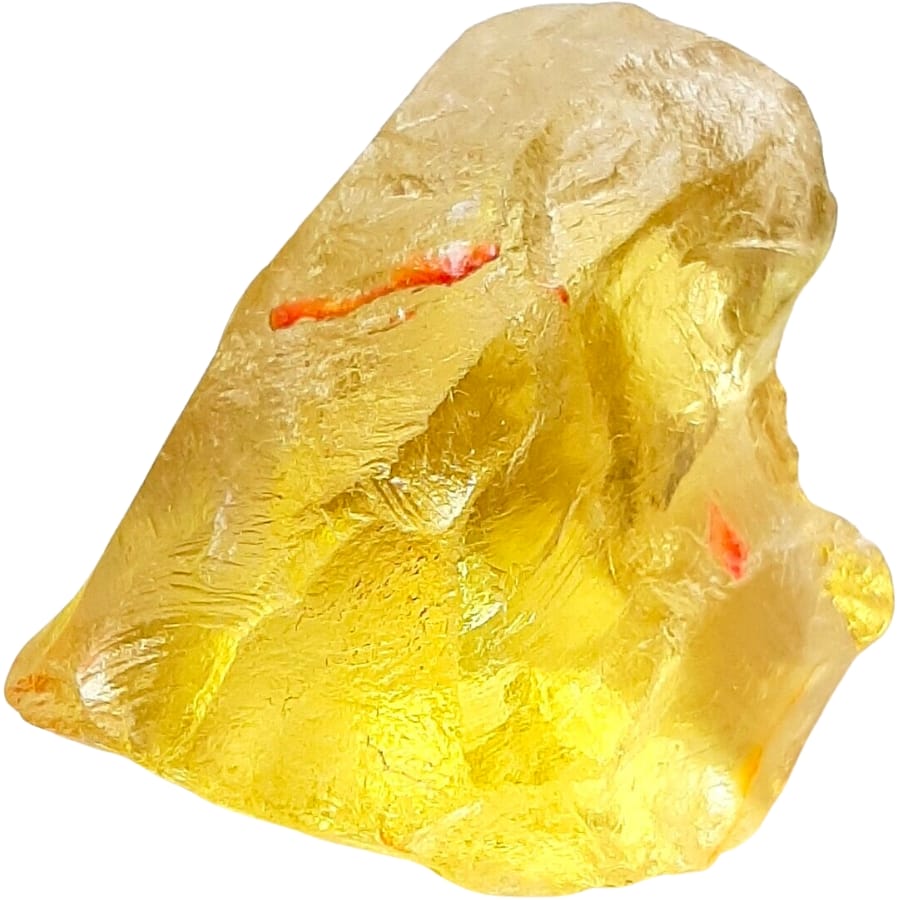
Luster is the shine you see on the surface of a gem when light hits it, and yellow topaz and citrine have their unique ways of sparkling.
Yellow topaz has a luster that’s like glass, known as vitreous. It sparkles and shines clearly and brightly, just like looking through a clean window on a sunny day.
When light hits this gem, it bounces back in a way that makes it seem like it’s glowing from the inside. This bright, glassy sparkle is one reason why people love yellow topaz in their jewelry.
While citrine can shine like glass too, sometimes it has a bit of a different luster. Along with being vitreous, it can also have a waxy luster. This doesn’t mean it looks like it’s covered in wax.
Instead, think of it like the soft glow of a candle. It’s a gentler, more subtle kind of shine compared to the glassy sparkle of yellow topaz. This waxy luster gives citrine a warm and soothing appearance.
Crystal Structure – Citrine has a trigonal crystal system
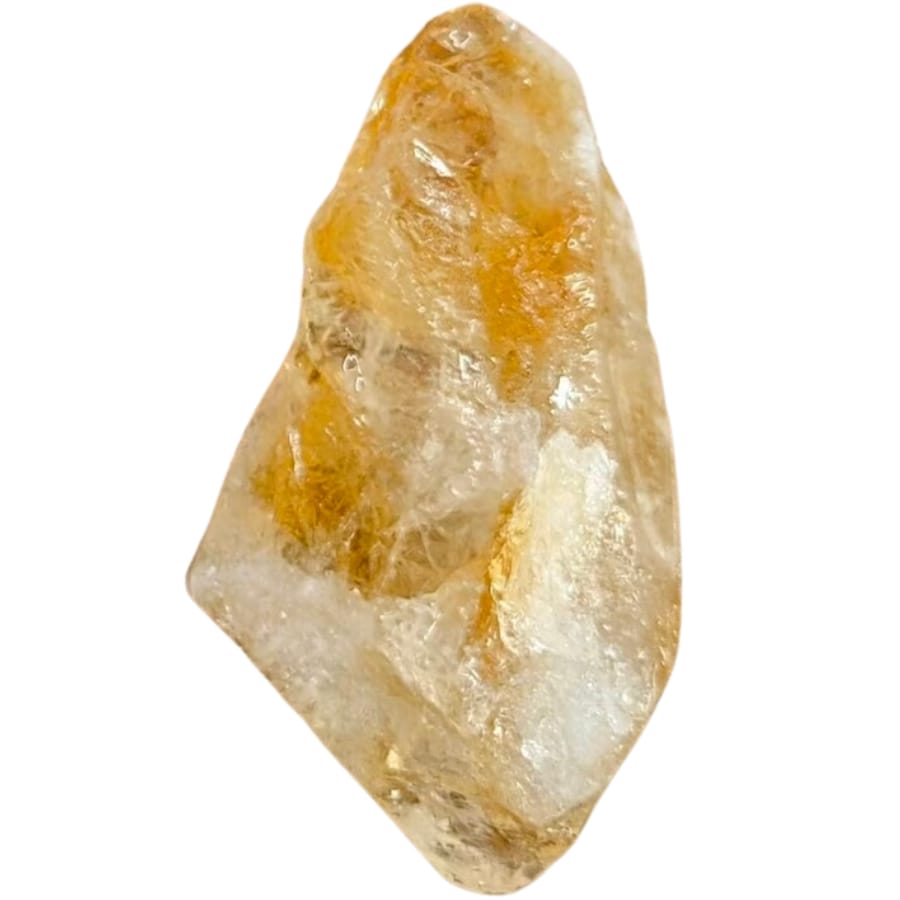
When we talk about crystal structure, we’re looking at how the tiny bits that make up a gemstone are arranged. It’s like comparing two different kinds of buildings made from the same type of bricks but arranged in different ways.
Yellow topaz has a crystal structure that’s like a well-organized city. Its atoms are lined up in a pattern called orthorhombic. Imagine a box that’s a bit squished, not a perfect cube, but with all its sides at different lengths.
This structure gives this gem its special shapes, often forming long, slender crystals. These crystals can look like elegant pillars or towers, standing tall and straight.
Citrine, on the other hand, is like a different type of city, with a structure called trigonal. Think of a crystal that’s more like a hexagon if you look at it from the top. This is like a city with buildings shaped more like honeycombs.
Citrine’s crystals often grow in hexagonal shapes: like pencils with six sides. This pattern creates crystals that can be quite varied, sometimes long and slender, other times short and stubby.
Cleavage – Yellow topaz has perfect cleavage in one direction
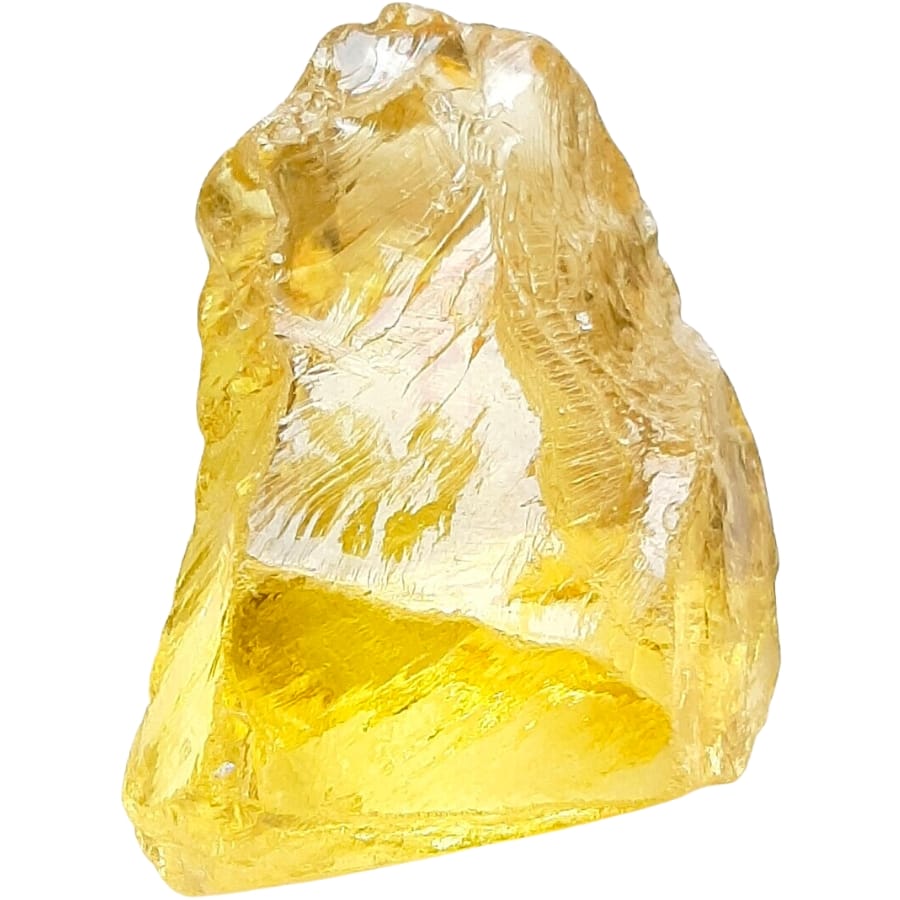
Cleavage in gemstones is like natural breaking points. It tells us how a gemstone might split when it’s cut or if it gets hit.
Yellow topaz has what we call perfect cleavage in one direction. It can split very smoothly along one particular line. It’s like having a piece of wood that splits easily along the grain.
This perfect cleavage makes this gem a bit tricky to work with for jewelers. They have to be super careful when cutting it, or it might split the wrong way.
Citrine, though, is different. It doesn’t have cleavage, which means it doesn’t have a natural way of splitting smoothly. Instead, if this gem breaks, it tends to fracture or break in an uneven way, not along a flat, smooth line.
For jewelers, this is kind of a good thing. They don’t have to worry as much about citrine splitting in an unexpected way.
Composition – Citrine is a variety of quartz
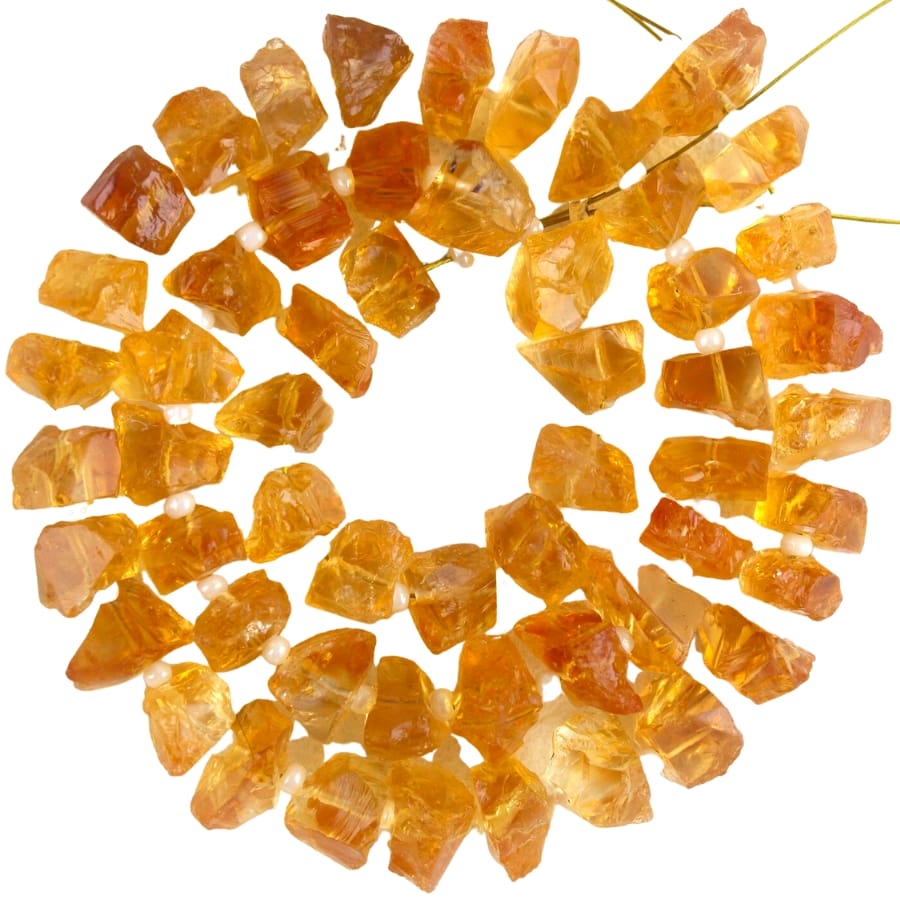
When we talk about a gemstone’s composition, we’re diving into what they’re made of. Like in a recipe, each gemstone has its own unique set of ingredients that make it special.
Yellow topaz is made of a cool mix of elements. Its main ingredients are aluminum and fluorine mixed with silicon and oxygen.
These elements come together to form yellow topaz’s unique chemical recipe, which is Al2SiO4(F,OH)2. This is what gives this gem its special qualities, like its color and hardness.
Citrine, on the other hand, has a simpler recipe. It’s mainly made of just one key ingredient: silicon dioxide (SiO2). This is the same stuff that makes up quartz, which citrine is a type of.
You can think of this gem as a simple, classic cookie with just a few ingredients. But, what makes it special is a tiny bit of iron mixed in. This is what gives citrine its beautiful yellow-to-orange colors.
Formation – Yellow topaz forms in pegmatites or high-temperature environments
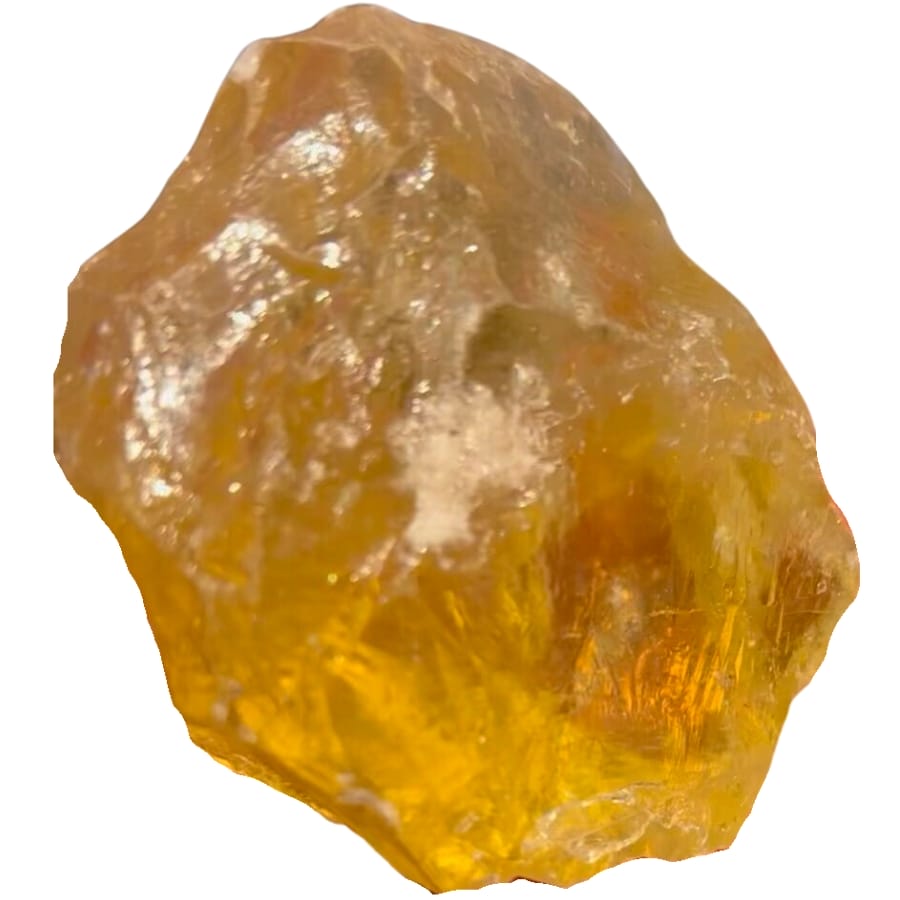
Yellow topaz forms in special underground places called pegmatites. These are areas where very hot fluids filled with different minerals move through cracks.
Over time, as these fluids cool down, this gem starts to form. This process makes yellow topaz grow into its unique shapes. Sometimes, it can also form in volcanic rocks, with heat and pressure playing a big role.
Meanwhile, citrine is a type of quartz, and it forms in a different way. It’s often found in cooler places, like quartz veins. These are like rivers of quartz deep underground.
The yellow color of citrine comes from traces of iron. Sometimes, heat from the Earth can change other types of quartz into citrine. It’s kind of like baking something in an oven where the heat helps create something new and beautiful.
Hardness – Citrine is slightly easier to scratch
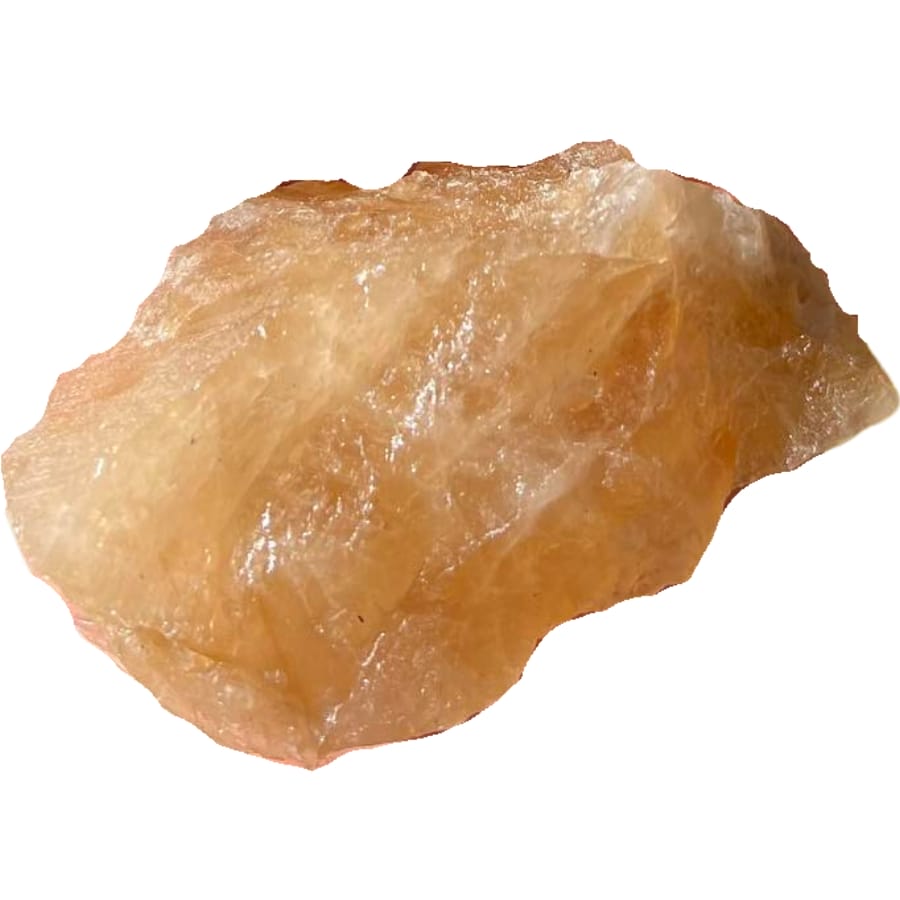
Hardness is looking at how well gemstones can resist scratches and other kinds of marks.
Yellow topaz scores an impressive 8 out of 10 on the Mohs Scale of Hardness, a ladder for measuring how tough a mineral is, with 10 being the toughest.
Being an 8 means this gem is quite strong and doesn’t scratch easily. This makes it great for all kinds of jewelry, even rings and bracelets that get knocked around a lot.
Citrine, on the other hand, is a bit softer. It scores a 7 on the Mohs scale. While it’s still pretty tough— tougher than glass, for example— it’s not quite as hard as yellow topaz.
A citrine gemstone might need a bit more care to keep it looking nice. It’s still good for jewelry, but you might want to be a little more careful with it, especially if you’re wearing it every day.
Density – Yellow topaz has a higher density
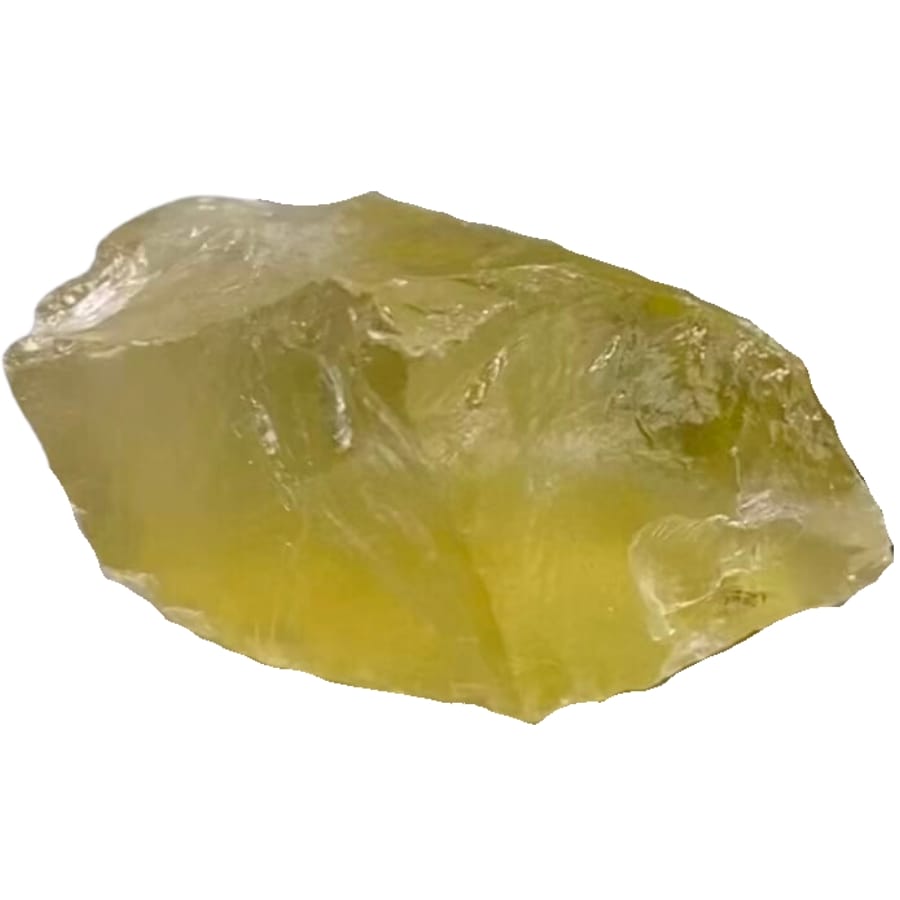
Density in gemstones measures how much stuff is packed into them. It’s kind of like comparing two backpacks that are the same size, but one is heavier because it has more things in it.
Yellow topaz is like a backpack that has more stuff in it. It has a higher density, which means for its size, it’s heavier. Its density is around 3.4 to 3.6 grams per cubic centimeter.
If you had a cube of yellow topaz 1 centimeter on each side, it would weigh about 3.4 to 3.6 grams. Because of this higher density, a piece of this gem feels a bit heavier than you might expect when you pick it up.
Citrine, on the other hand, is a bit like a lighter backpack. It has a lower density, around 2.65 grams per cubic centimeter. So, if you had a cube of this gem the same size as a yellow topaz, it would feel lighter.
Fluorescence – Citrine does not exhibit fluorescence
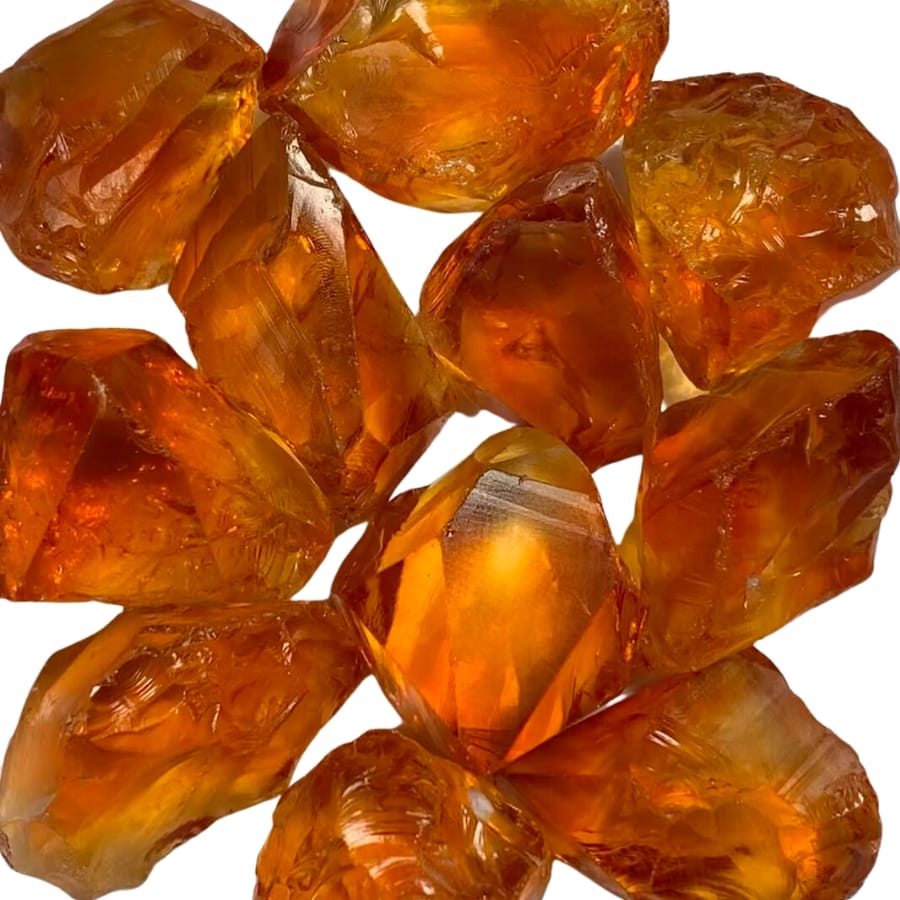
Fluorescence is when gemstones glow under certain kinds of light, like ultraviolet light, which we often see with a blacklight. This glow can be a totally different color than the gemstone’s normal color.
When you put a yellow topaz under ultraviolet light, it can show a weak fluorescence. This means it might give off a soft, gentle glow.
The color of this glow can be yellow, just like the gemstone, or sometimes a different color. It’s not a super bright one, but it’s a hidden feature that only shows up under this special light.
Citrine, however, usually doesn’t have this trick. When you shine ultraviolet light on this gem, it typically doesn’t glow.
Location – Yellow topaz is less widespread
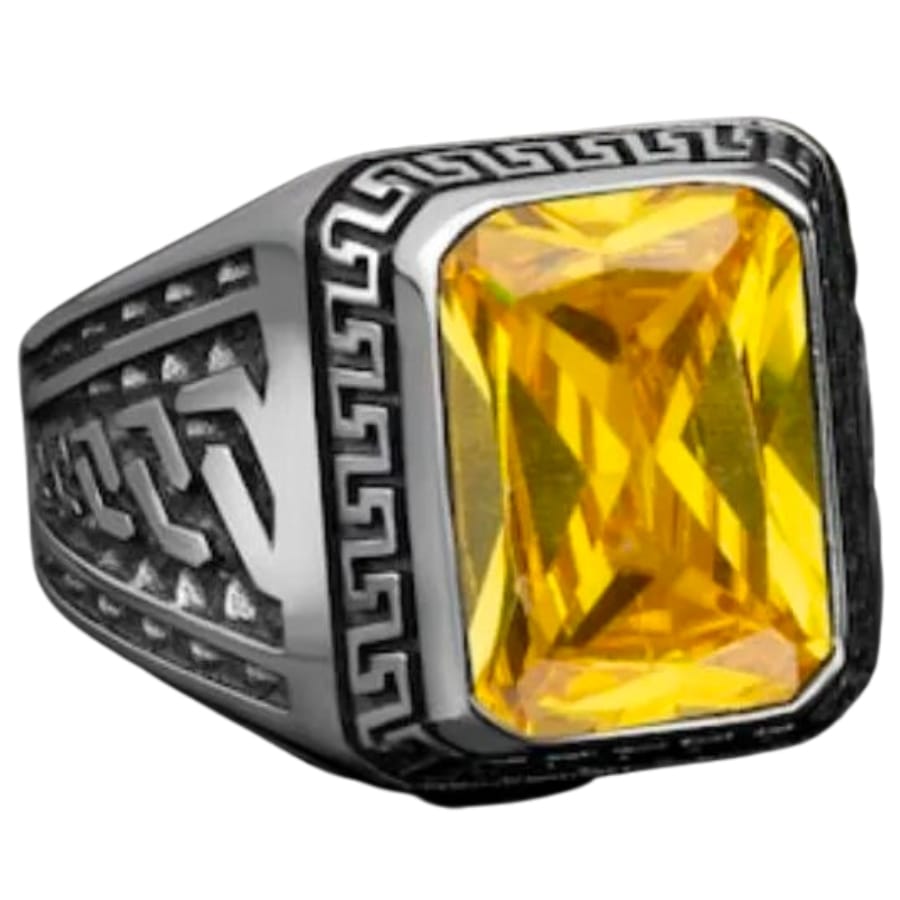
Different gems are found in different places, and yellow topaz and citrine are no exceptions. They both come from various parts of the globe, but their main “homes” are different.
Yellow Topaz is found in many places, but it’s generally less traveled than citrine. Some countries are famous for it, like Brazil, which is considered the hotspot for beautiful yellow topaz.
You can also find it in Nigeria, Australia, Myanmar, and the U.S. If you want to find the gem, here’s a guide to the best rockhounding locations. You can also check out this focused guide on where to find yellow topaz near you.
Citrine, on the other hand, is quite the globe-trotter and it has its favorite spots. Brazil is again a big name here. It seems Brazil loves its sunny gemstones! It’s also found in Spain, Bolivia, France, Russia, Madagascar, and the U.S.
Eyeing this gem? Here’s a complete guide on how to find citrine. You can also refer to our article on finding gems near you.
Price – Citrine is generally more affordable
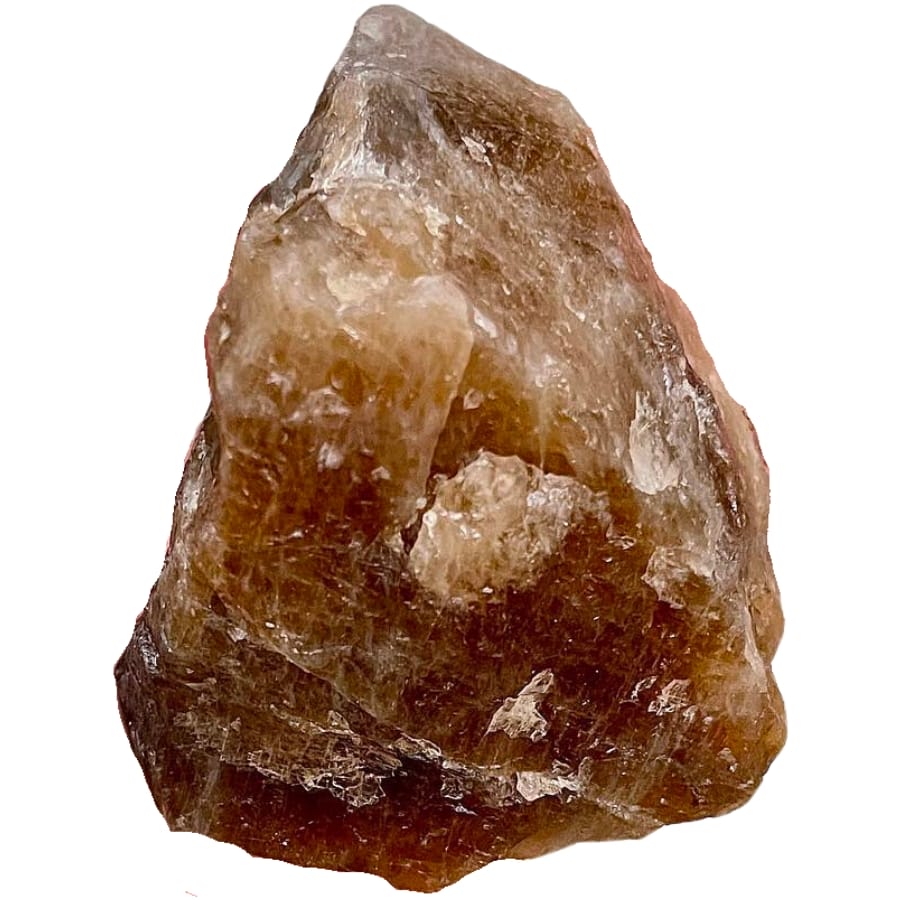
The price of gemstones is a bit like shopping for clothes. Some brands are more expensive due to their quality, rarity, or even the name, while others are more affordable but still nice.
Yellow topaz, especially the high-quality kind, can be like a designer label in the gemstone world. The price of yellow topaz is more expensive and it can go up even more depending on how clear it is, how it’s cut, and its color.
The most prized yellow topaz is the kind that has a bright, clear yellow color, and if it’s big and doesn’t have any blemishes or scratches, the price can get pretty high.
Citrine, in comparison, is usually more like your everyday wear: nice, but more affordable. It’s often less expensive than yellow topaz. Even though it’s beautiful, it’s more common, and you can find it in larger sizes without spending a lot of money.
The price of citrine makes it a popular choice for people who want a pretty yellow gemstone without the high price tag of yellow topaz.
Yellow Topaz vs Citrine – The Similarities
Even though comparing citrine vs yellow topaz revealed more differences than similarities, these two beautiful gems share several traits and properties, too. Below are some of them:
Streak – Yellow topaz and citrine have white streaks
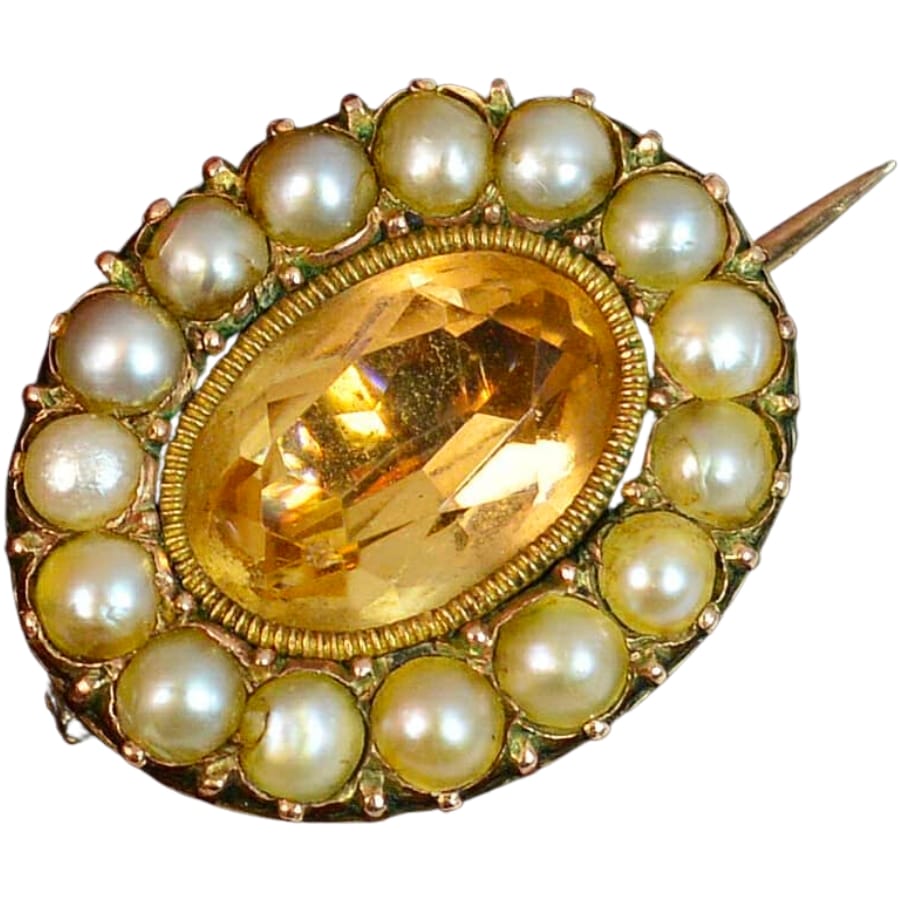
Streak is the color of the powder a gemstone leaves when you rub it on something rough, like a piece of tile. This can be a neat way to learn more about gems
Yellow topaz and citrine have something in common here— their streaks are pretty similar. Both of them, no matter what color they are on the outside, leave a streak that’s colorless or white.
It’s a bit surprising, right? You might think that since yellow topaz and citrine are yellow, they would leave a yellow streak. But nope, it doesn’t work that way. Instead, both of them will leave a mark that looks like it’s drawn with a clear or white crayon.
This white or colorless streak tells us something about what they’re made of inside, not just what color they appear on the outside.
Magnetism – Both citrine and yellow topaz are non-magnetic
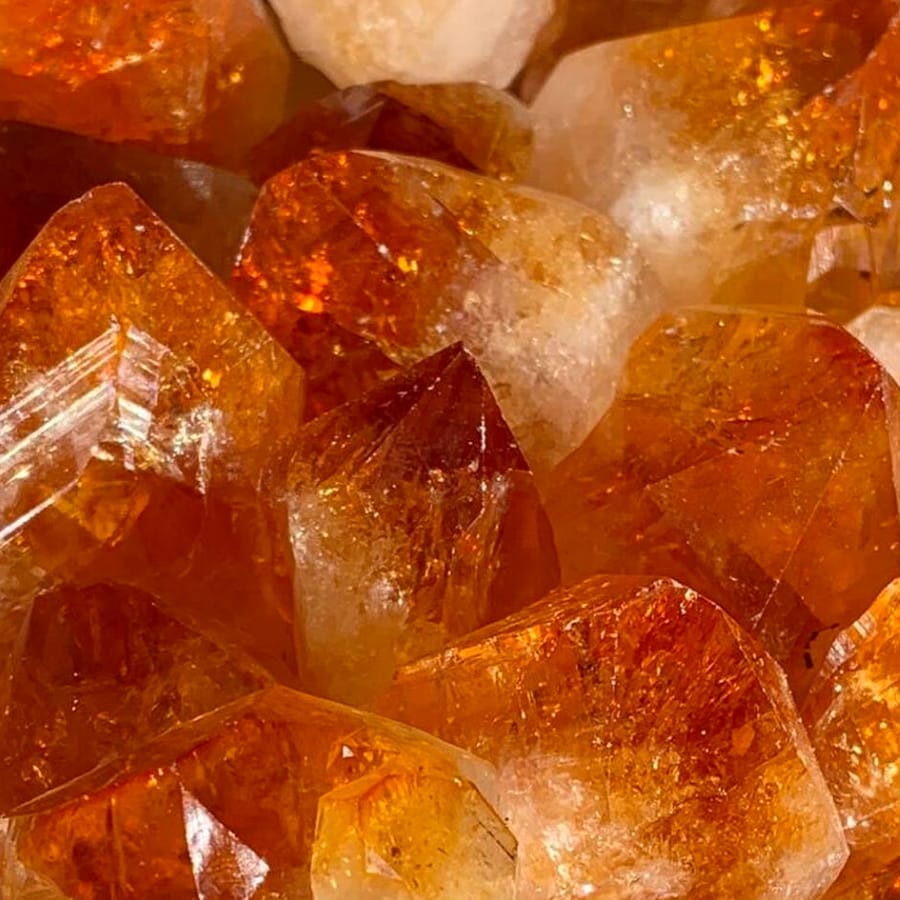
When we think about magnets, we usually picture them sticking to the fridge or holding up notes. But did you know that some gemstones can also be a bit magnetic?
But in the case of yellow topaz and citrine, there’s an interesting point: both of these pretty gems are not magnetic.
Imagine you have a magnet and you move it close to a piece of either of these two gems. You might expect something exciting to happen, but in reality, nothing does.
The magnet won’t pull on the yellow topaz or citrine, and the gems won’t move toward the magnet.
This lack of magnetism in both of them is because of the way they are made up. They don’t have the right stuff in them to be attracted to magnets.
Conductivity – Yellow topaz and citrine are both non-conductive
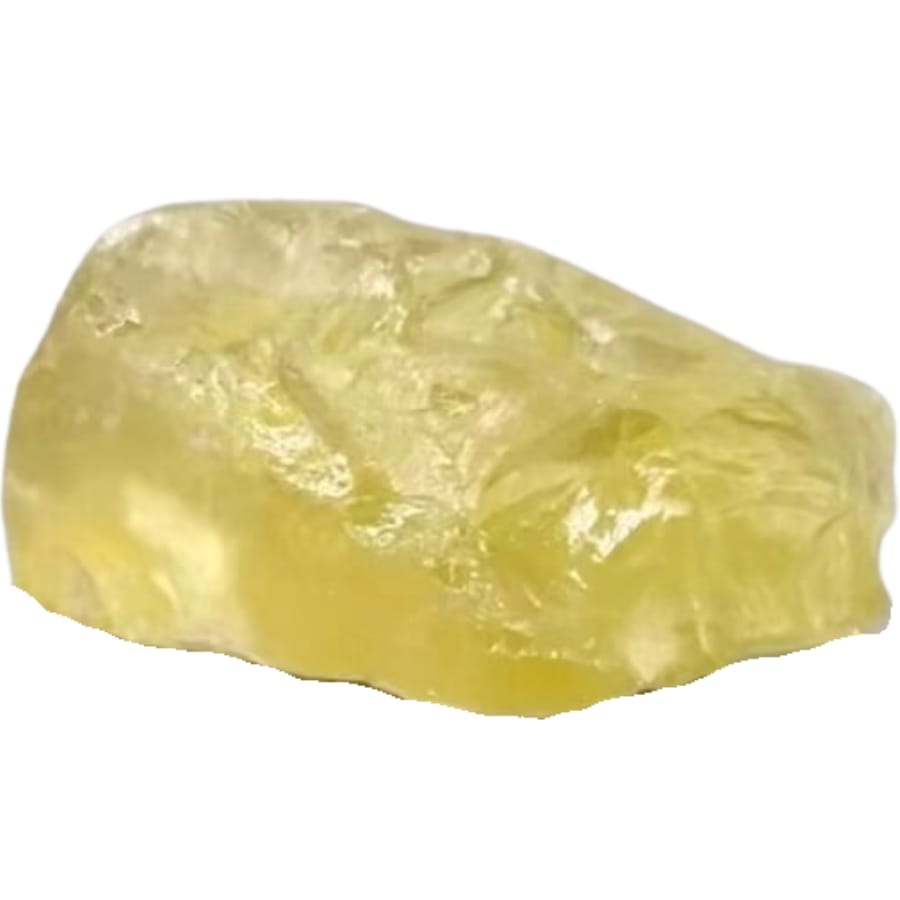
Conductivity measures how well something can carry electricity. It’s like when you use a wire to connect a light bulb to a battery, and the wire helps the electricity travel.
When it comes to yellow topaz and citrine, both of them are not good at conducting electricity. They’re more like rubber or plastic in this way, not like metal wires.
If you tried to use a piece of these gemstones instead of a wire to connect a light bulb to a battery, the bulb wouldn’t light up. That’s because they don’t let electricity flow through them very well.
Instead, they’re kind of like roadblocks for electricity. This is true for most gemstones, not just yellow Topaz and citrine.
This similarity in not being good conductors is because of how they are made on the inside. The atoms and molecules inside them are not arranged in a way that lets electricity pass through easily.
The Easiest Ways To Tell Yellow Topaz And Citrine Apart
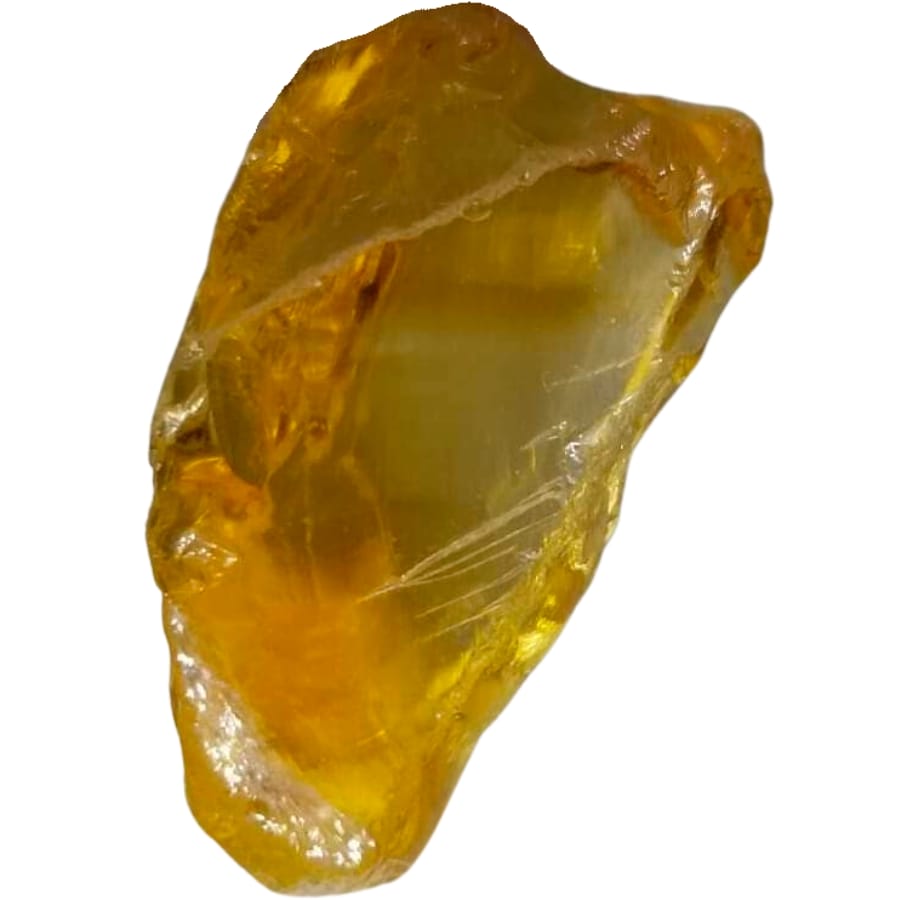
Now that you know the similarities and differences between yellow topaz and citrine, let’s put this knowledge into practice.
Say, you have two gemstones in your palm and they’re either a yellow topaz or a citrine. How will you know which is which? Well, below are some simple observations you can make based on their unique qualities.
Inspect the color
Even though both yellow topaz and citrine flaunt shades of yellow, the key lies in the nuances and consistency of their colors.
Yellow topaz typically showcases a more uniform golden-yellow hue. It’s akin to a pure, uninterrupted ray of sunlight or the rich, consistent color of honey. This uniformity gives it a distinct, classic yellow that’s both clear and bright.
Citrine, on the other hand, offers a broader palette of yellow shades, ranging from pale, almost lemony yellows to deeper, more amber-like or brownish-orange hues.
These colors can vary even within a single stone. It’s similar to looking at a gradient of autumn leaves, where the yellows blend into oranges and sometimes even reddish tones.
Check the shine
Checking the shine, or luster, is another great way to tell yellow topaz vs citrine.
Yellow topaz shines like glass, with a clear, bright, and sharp reflection. When you look at it, it’s almost like looking into a mirror; the light bounces back in a very direct and vivid way.
Citrine, while it can also have a vitreous, glass-like luster, often shows a slightly different type of shine. In some cases, its shine is softer and more subdued. It’s like the gentle glow of a candle.
Feel the weight
Feeling the weight of yellow topaz and citrine can be a surprisingly effective way to distinguish between these two gemstones.
When you hold a piece of yellow topaz in your hand, it tends to feel heavier than you might expect for its size because of its higher density.
On the other hand, citrine, which has a lower density, feels lighter when held. Even if a piece of citrine is the same size as a piece of yellow topaz, it won’t have the same heft.


